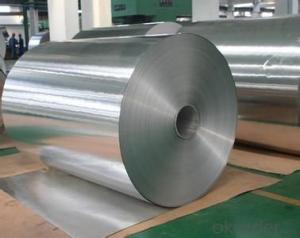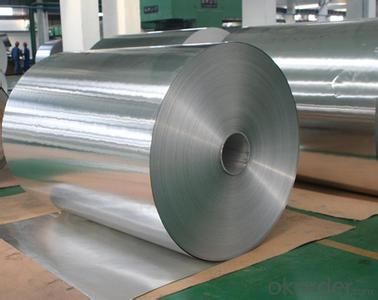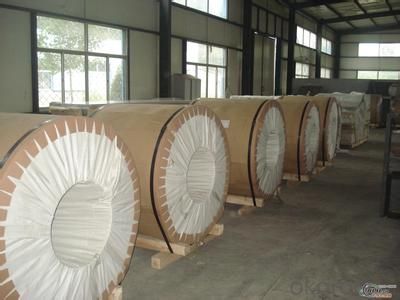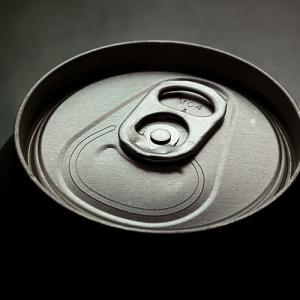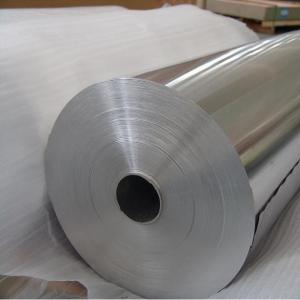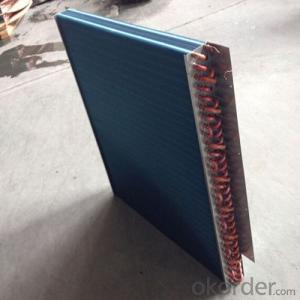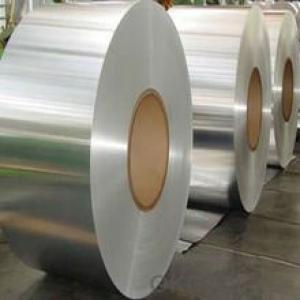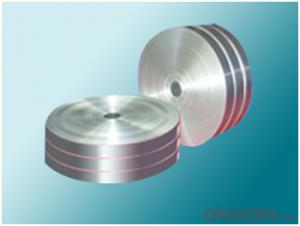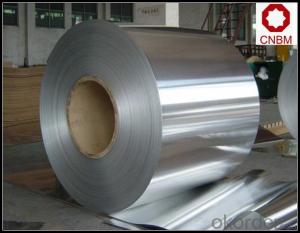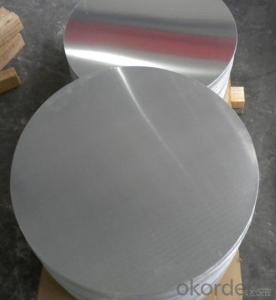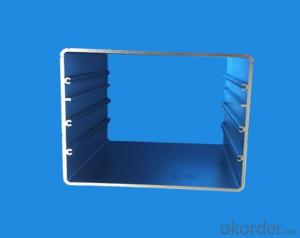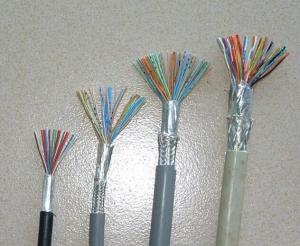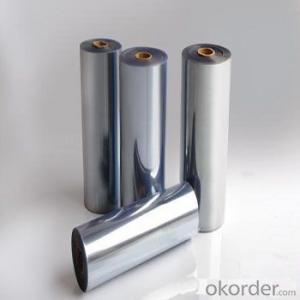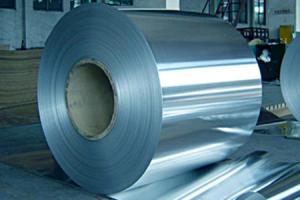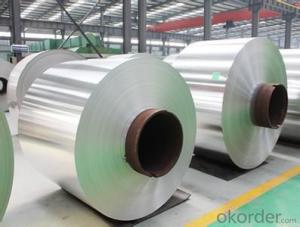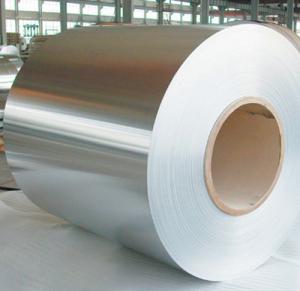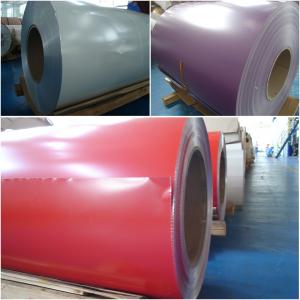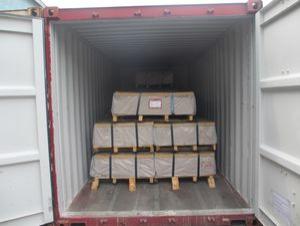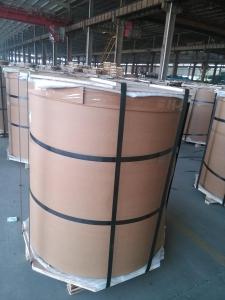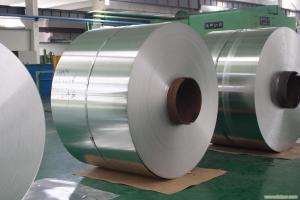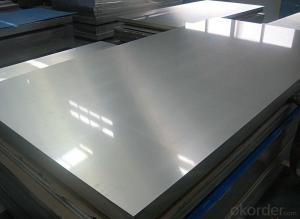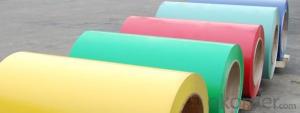Finished Foil Industrial Aluminum Coil - Custom Aluminum Strip/Coil
- Loading Port:
- Shanghai
- Payment Terms:
- TT OR LC
- Min Order Qty:
- 5 m.t.
- Supply Capability:
- 1000000 m.t./month
OKorder Service Pledge
OKorder Financial Service
You Might Also Like
1.Structure of Aluminium Strip/Coil:
Mill Finished Aluminium Strip/Coil is designed for many field such as electronics, instruments, lighting decoration, packing industry, and house decoration, curtain wall, honeycomb-core panel, sandwich panel, aluminum composite panel, aluminum composite pipe etc.. Mill finished Aluminium Strip/Coil for is hard and everlasting under the blazing sun. You can choose the alloys as your habitation and we will do our best to meet your requests.
2.Main Features of the Aluminium Strip/Coil:
• Smooth surface
• High manufacturing accuracy
• High strength of extension and yield
• Well packaged
• No marks, no scratch, no excessive oil
3. Aluminium Strip/Coil
Alloy: 1050, 1060, 1070, 1100, 3003, 3004, 3005, 3105, 5052, 5083, 5754, 8011, 8006
Temper: H14, H16, H18, H22, H24, H26, H32, O/F
Thickness: 0.2mm-100mm
Width: 30mm-1700mm
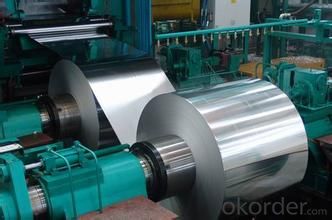
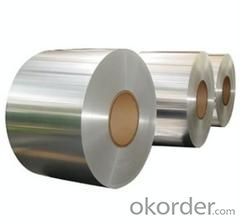
4. Production of Aluminium Strip/Coil
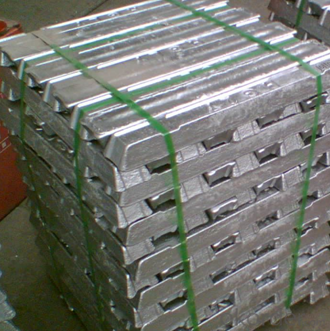
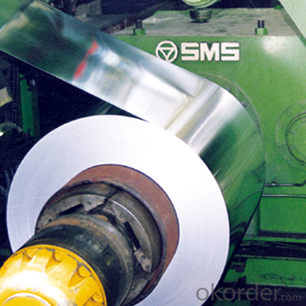
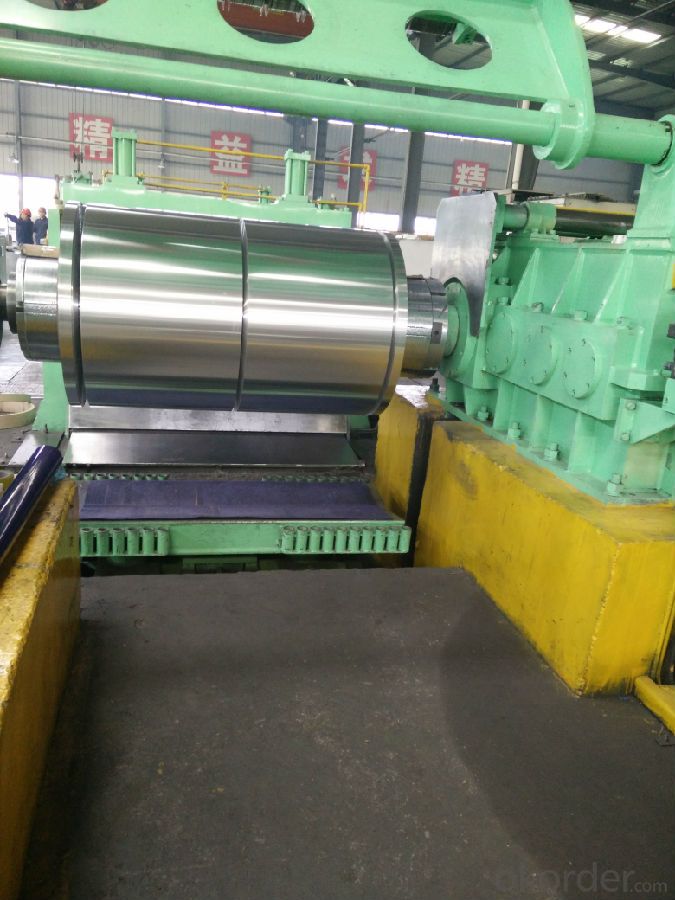
5.FAQ
We have organized several common questions for our clients,may help you sincerely:
① How about your company?
A world class manufacturer & supplier of aluminum coil and alloy blanks. Aluminum production base is comprised of 18 aluminum annealers, 10 coil and foil mills, 4 continuous production lines, 2 hot rolling production line and 3 prepainted lines.
Export 5000 tons per month to Asia, America and Middle East. Always do the best for our clients.
②Can you guarantee the quality of the products?
We are responsible for the quality of materials to get a long-term cooperation with clients in a reasonable period of time and we are glad to arrange and coordinate any third party inspection for you.
③What is the delivery time after purchase?
35 day after receiving client’s deposit or correct LC
- Q: How are aluminum coils joined together to form larger panels?
- Aluminum coils are joined together to form larger panels through a process known as coil joining or coil-to-panel joining. This process typically involves the use of a coil joining machine, which is designed to connect multiple coils of aluminum together seamlessly. The first step in this process is to feed the individual coils into the machine. The machine then unwinds the coils and brings them together, aligning them side by side. The edges of the coils are typically overlapped slightly to ensure a secure and continuous connection. Once the coils are aligned, the machine uses various techniques to bond them together. One common method is through the use of heat and pressure. The machine applies heat to the overlapping edges of the coils, softening the aluminum and allowing it to fuse together. Simultaneously, pressure is applied to ensure a strong bond is formed. Another method of joining aluminum coils is through the use of mechanical fasteners. In this case, the machine will punch holes through the overlapping edges of the coils and insert fasteners, such as screws or rivets, to hold them together securely. After the coils are joined, the machine continues to feed the connected coils forward, allowing for continuous production of larger panels. The excess material from the overlapping edges is typically trimmed off, resulting in a smooth and seamless panel. Overall, the process of joining aluminum coils to form larger panels requires precision and specialized machinery. The resulting panels are durable, lightweight, and commonly used in various industries such as construction, automotive, and aerospace.
- Q: How are aluminum coils protected against oxidation during storage?
- Aluminum coils are protected against oxidation during storage by applying a thin layer of protective coating or by storing them in a controlled environment, such as a dry and moisture-free area. This prevents exposure to oxygen and moisture, which are the main factors contributing to oxidation.
- Q: which metal is very common today and which one will be most common in future. steel or aluminum
- aluminum costs more to produce, but has some very good proprieties, you will likely see steel and aluminum way into the future in about the same ratios as today
- Q: What are the common surface defects found in aluminum coils?
- Surface defects commonly found in aluminum coils include various issues such as scratches, dents, corrosion, streaking, oxide spots, oil stains, and roll marks. Scratches are visible lines or marks that can occur during handling, transportation, or processing, impacting both the appearance and functionality of the coil. Dents are depressions or deformations that can result from mishandling or impact during transportation or storage, affecting the coil's structural integrity and aesthetics. Corrosion, which can appear as pitting, discoloration, or roughness, is a concern in environments with high moisture levels or exposure to chemicals, weakening the coil and compromising performance. Streaking, thin lines or bands on the surface, may indicate uneven coating or surface contamination, potentially pointing to manufacturing issues. Oxide spots are small discolored areas caused by aluminum oxide formation during processing or storage, mainly affecting aesthetics. Oil stains are greasy or oily marks resulting from improper cleaning or handling, impacting coating adhesion and requiring additional cleaning or treatment. Roll marks, elongated depressions or raised lines caused by the rolling process, are generally unavoidable but excessive or severe instances can negatively affect appearance and quality. Implementing proper quality control measures, handling techniques, and storage practices can help minimize or prevent these surface defects in aluminum coils.
- Q: What are the different elongation values of aluminum coils?
- The elongation values of aluminum coils can vary based on the specific alloy and temper of the aluminum. Generally, aluminum coils possess exceptional elongation characteristics, enabling them to undergo stretching or deformation without breaking. To illustrate, the frequently utilized alloy 3003-H14 typically exhibits an elongation value of approximately 20-30%. This implies that the aluminum coil can stretch up to 20-30% of its original length before reaching the point of fracture. Conversely, high-strength alloys such as 7075-T6 possess lower elongation values, typically ranging from 9-13%. These alloys are specifically designed for applications where strength is of utmost importance, albeit at the expense of sacrificing some elongation properties. It is worth noting that elongation values can also be influenced by the processing and treatment methods employed on the aluminum coils. For instance, annealing or heat treatment can enhance the elongation properties of specific alloys. In conclusion, the elongation values of aluminum coils can span from 9% to 30%, depending on the alloy, temper, and processing methods utilized.
- Q: What are the potential health hazards associated with the use of aluminum coils?
- <p>There are concerns about the health risks associated with using aluminum coils, particularly in cooking. Aluminum can leach into food when heated, and excessive intake may lead to cognitive impairment and neurological issues. However, the risk is generally considered low with normal usage. It's important to follow proper cooking practices and use utensils that are not reactive with aluminum to minimize exposure. For those with concerns, alternatives like stainless steel or cast iron can be used to reduce potential health risks.</p>
- Q: and alsoHow many grams of the decay product will have formed after 8 days go by?The decay product is the new isotope created as a result of the positron decay of aluminum-24.In class my teacher didn't explain this completely but there's a question on the homework that me and even my mom (another teacher) can't find the answer to.
- so it 6000/ (2*8*24*60*60) 0.00434027778 grams have you heard of the internet an unless your mom is a chem teacher it doesnt mean much
- Q: What benefits can be gained from utilizing aluminum coil insulation in various applications?
- <p>Aluminum coil insulation offers several advantages, including high thermal conductivity, which allows for efficient heat transfer. It is lightweight and corrosion-resistant, making it durable and suitable for various environments. The material is also known for its flexibility, which facilitates easy installation and adaptability to different shapes and sizes. Additionally, aluminum coil insulation has good electrical conductivity, which can be beneficial in applications requiring electromagnetic shielding. Its recyclability contributes to environmental sustainability, reducing waste and promoting green practices.</p>
- Q: Explain how the temperature affects aluminum coil properties and behavior.
- <p>The relationship between aluminum coil and temperature is significant as temperature influences the coil's physical properties and performance. At lower temperatures, aluminum coils become more brittle and susceptible to cracking or breaking. As the temperature increases, aluminum's ductility improves, allowing it to be more easily shaped and formed. However, excessive heat can also lead to deformation and loss of strength. The thermal conductivity of aluminum is high, meaning it conducts heat well, which is useful in applications requiring heat transfer. Additionally, the electrical conductivity of aluminum is affected by temperature; as temperature rises, resistance increases, which can impact applications where electrical conductivity is critical.</p>
- Q: What are the safety regulations that need to be followed while using aluminum coil?
- <p>Yes, there are safety regulations for using aluminum coil. These include ensuring proper ventilation to prevent the buildup of aluminum dust, which can be a fire hazard. Protective equipment such as gloves and eyewear should be worn to avoid skin and eye contact with the material. Additionally, it's crucial to follow guidelines for handling and storing aluminum coils to prevent accidents, such as ensuring they are not damaged or exposed to extreme temperatures. Compliance with local and industry-specific safety standards is also essential to maintain a safe working environment.</p>
Send your message to us
Finished Foil Industrial Aluminum Coil - Custom Aluminum Strip/Coil
- Loading Port:
- Shanghai
- Payment Terms:
- TT OR LC
- Min Order Qty:
- 5 m.t.
- Supply Capability:
- 1000000 m.t./month
OKorder Service Pledge
OKorder Financial Service
Similar products
Hot products
Hot Searches
Related keywords
